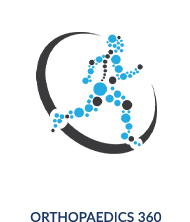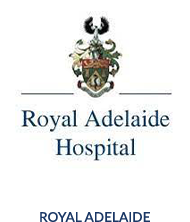Targeted treatments are available for your shoulder.

Your Shoulder -
How Does It Work?
Shoulder pain can be incredibly debilitating and impact on your ability to work or participate in activities you enjoy. It may even lead to difficulty doing simple, every day tasks such as brushing your hair, getting dressed or hanging the washing.
The shoulder is actually quite complex and made up four different joints: the glenohumeral joint, the acromioclavicular joint, the sternoclavicular joint and the scapulothoracic joint. Injury or disease of any of these parts can present itself as shoulder pain and discomfort. What’s more, occasionally pain originating from the neck can radiate down the shoulder and arm, and mimic shoulder disease.

Finally, above the rotator cuff is a shelf-like projection of bone from the shoulder blade known as the acromion. Between the rotator cuff and the acromion is a bursa, which is a fluid filled sac of tissue which normally cushions and protects the cuff from getting caught against the acromion.
Phew! That was quite a run-down of the important anatomy of the shoulder!
Most commonly it is the glenohumeral joint, or ball-and-socket part of the shoulder which is affected. This ball-and-socket is made up of the glenoid (socket part of the shoulder blade) and the humeral head (ball part of the arm bone). This surface of the ball-and-socket is lined by smooth, shiny joint cartilage which ensures frictionless gliding of the joint. In fact, the shoulder is the most mobile joint in the body!
Encircling the socket of the joint is a thick rim of fibrocartilage called the labrum. This rim of tissue deepens the socket, and serves as the attachment point for the ligaments and capsule of the shoulder joint. If the rim of the socket is thought of as a clockface, at the 12 o’clock position attaching to the labrum is one of the tendons of the biceps muscle. This tendon glides within the shoulder joint.
Surrounding the ball-and-socket joint of the shoulder is a strong, thick layer of tendons called the rotator cuff. The rotator cuff is actually made up of 4 separate tendons which belong to muscles lying on the shoulder blade. These muscles are the subscapularis, supraspinatus, infraspinatus and teres minor. The rotator cuff is responsible for rotation and elevation of the arm, and is crucial in allowing you to position your hand and arm where you want.
Now, what can go wrong to cause your shoulder pain?
1. Arthritis
When the smooth cartilage coating the humeral head (ball of the shoulder) and the glenoid (socket of the shoulder) gets damaged by injury or wear-and-tear, it can expose the underlying bone. Unfortunately this special type of joint cartilage does not grow back when damaged, and over time more and more bare-bone can get exposed. Eventually, bone rubbing against bone (bone-on-bone arthritis) can occur and cause pain, stiffness and loss of function. Find out more about shoulder arthritis and shoulder replacement surgery.

2. Labral tears
The rim of labrum around the shoulder can get torn following an injury to the shoulder. In younger patients, this is usually due to a shoulder dislocation. Labral tears can also occur as a result of wear-and-tear. When associated with shoulder instability, labral tears can be a source of ongoing shoulder discomfort and pain, particularly with overhead movements. Find out more about shoulder instability and keyhole stabilisation.
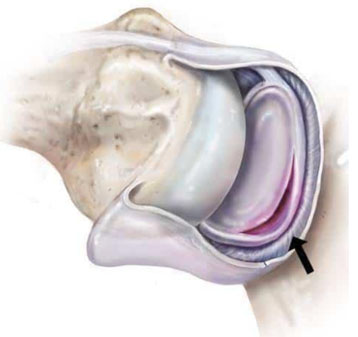
3. Biceps tendinopathy
As mentioned above, the biceps muscle has one of its two tendons originating and running within the shoulder joint. This tendon can become quite problematic and is a very common source of shoulder pain. The part of the tendon within the shoulder joint can be unstable, torn, inflamed and even rupture completely. An inflamed and unstable biceps tendon can cause painful clicking and catching felt at the front of the shoulder joint. Find out more about biceps tendinopathy and biceps surgery.

4. Rotator cuff tears
Just like the labrum, the rotator cuff can get torn as a result of an acute injury such as a hard fall, a sharp twist, or when reaching out to catch yourself. It may also get torn as a result of wear-and-tear and degeneration. Nevertheless, a torn rotator cuff tendon can cause inflammation and lead to shoulder aches and pain, shoulder weakness and loss of function. Find out more about rotator cuff tear and keyhole repair.
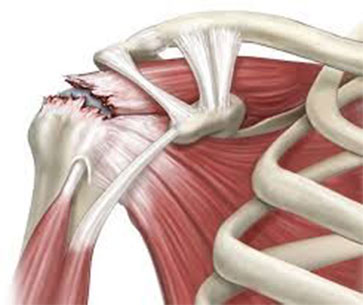
5. Bursitis and impingement
The bursa above the rotator cuff can become thickened and inflamed, particularly if bone spurs have developed on the acromion. This is often due to repetitive strain on the shoulder. When the bursa is thickened and catches on the abnormal bone spurs of the acromion, this causes a painful limitation of shoulder movement – particularly overhead movements. This is known as impingement syndrome, and is another common cause of ongoing shoulder pain. Find out more about subacromial bursitis and impingement syndrome and keyhole decompression.
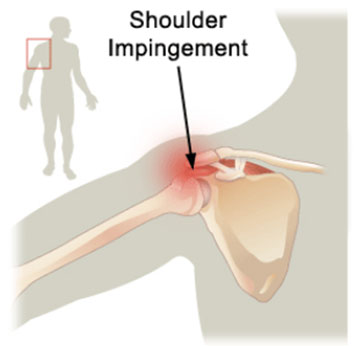
How do I find out whats causing my shoulder pain?

The shoulder problems mentioned above is by no means exhaustive, however, they are the most common conditions leading to shoulder complaints. The first step towards relieving your shoulder pain is to see your GP who can perform an assessment of you and your shoulder. If necessary, imaging tests may be required, such as an xray, ultrasound or MRI. This can help confirm the diagnosis, and guide management.
First-line treatments for many of the common conditions listed above include rest, activity modification, anti-inflammatory medication, physiotherapy and steroid injections. If the problem persists or if otherwise indicated, then you may need to be referred to see an orthopaedic shoulder surgeon for further assessment. Ultimately, the goals of your treatments are to relieve your shoulder pain, restore your function, and return you back to doing the things you love!
How to make an initial appointment
My goals as a surgeon are to relieve your pain, restore your function, and return you back to doing what you love.
– Dr Raymond Yu
- Adelaide Orthopaedic Surgeon
- Adelaide Shoulder Surgeon
About
Dr Raymond Yu
Dr Raymond Yu is an Adelaide Orthopaedic Surgeon with post-Fellowship expertise in Shoulder and Elbow Surgery.
He specialises in orthopaedic surgery of the Shoulder and Upper Limb with a focus on modern keyhole and minimally-invasive techniques.
Dr Yu has a special passion for:
- Rotator cuff repair surgery
- Shoulder replacement surgery
- Shoulder stabilisation surgery
Dr Yu practices at


